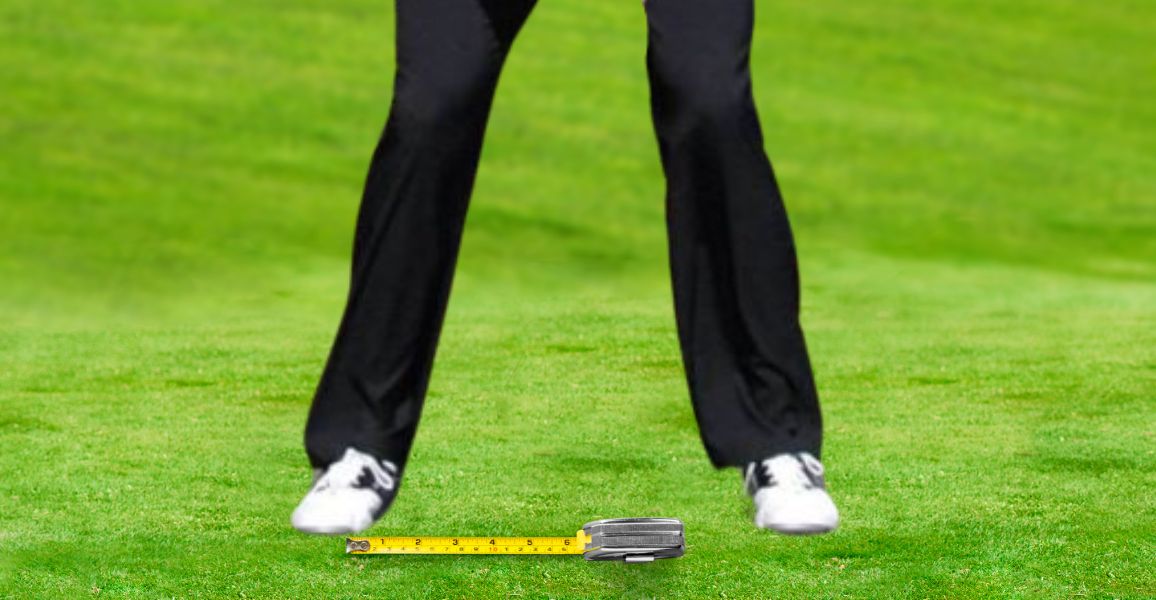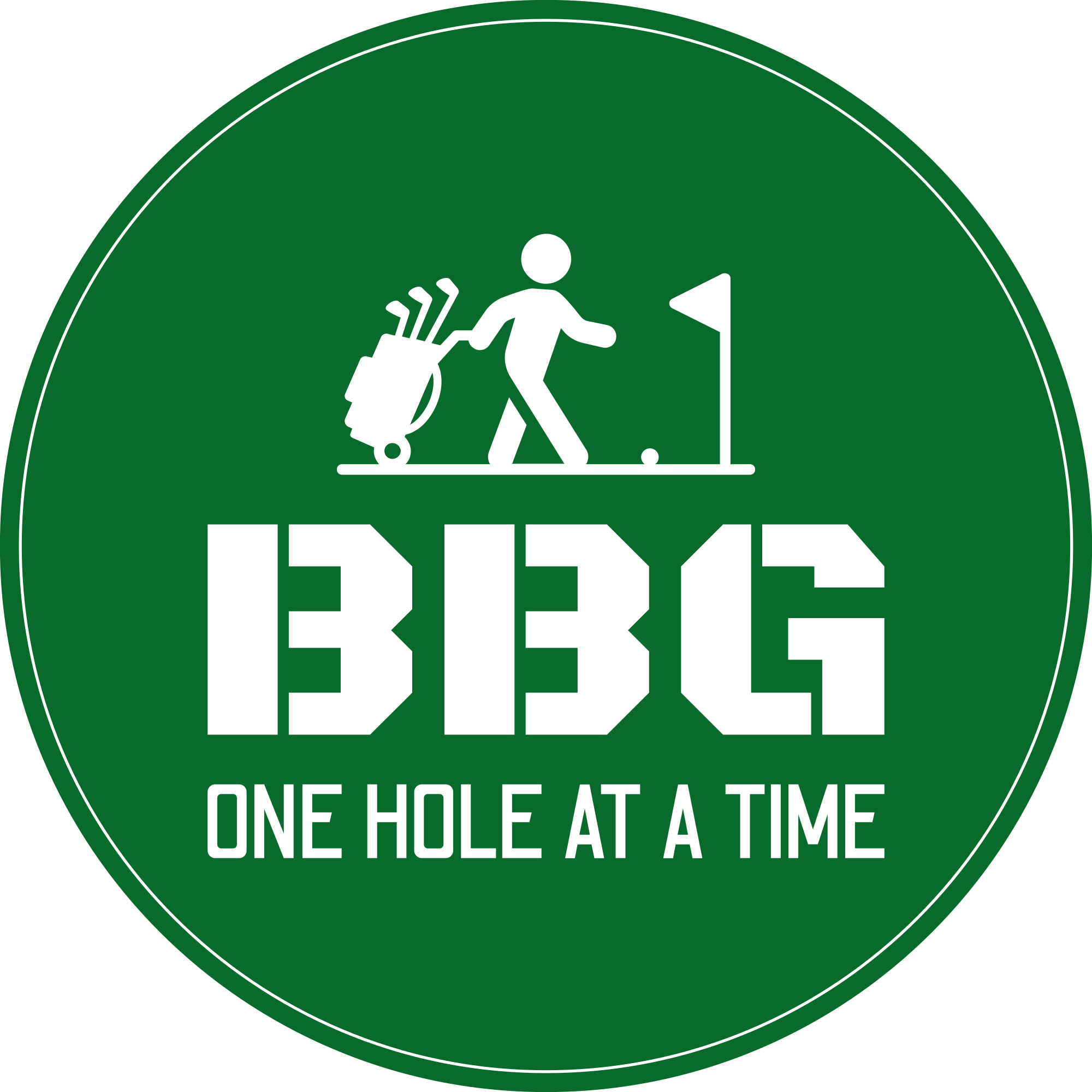In golf, the most important distance is the five inches between the ears. – Bobby Jones
Standing too far or close to the ball could cause many of your problems on the golf course.
To name a few of the two, they could be responsible for a slice, hook, shank, loss of distance, injuries from poor posture, and loss of balance.
And the funny thing is by just moving a little toward or away from the ball, you can fix your swing overnight.
So, what is the perfect distance to stand from the ball?
There is no such thing as the perfect distance you should be from the ball.
However, there is such a thing as the perfect setup to ensure you’re at the proper distance at the address.
Think about it: how can there be a perfect distance when all of your clubs are different lengths, require different techniques, and move up or back in your stance?
Today, you will discover how to get into the ideal position through setup, the signs of being too close or far, and when they could be beneficial.
How To Get The Right Setup Checklist:

Get Your Feet The Righ Width Apart
A good starting point for your stance would be setting your feet shoulder-width apart.
This will cover you for most of the clubs in your bag.
From here, you can make minor adjustments.
You should narrow your stance slightly for short irons and wedges. Then, for longer irons, woods, and driver, you should widen your stance.
Stance width may not seem important, but it can affect the entire swing.
When your stance is too wide, like a showdown cowboy in a John Wayne movie, you won’t be able to rotate your upper/lower body properly.
Causing an incomplete swing and slices.
On the flip side, having a stance that is too narrow when hitting longer clubs is not a stable/powerful position.
Leading to off-balance shots.
Important to also keep in mind where you distribute your weight on your feet. You should distribute the weight evenly, as favoring your heels or toes can cause issues.
Have A Slight Bend In Your Knees
Having the right knee flex is hugely important in the golf swing.
Before my coach slapped it out of me (not literally), my legs used nearly straight, this setup meant I couldn’t use my lower body to generate power, which cost me distance.
It’s not a good position. Think about this. If I wanted to push you over, would it be easier if you were squatted or your legs were perfectly straight?
Well, in golf, you want something in between. You should have a slight bend that you feel stacked/stable.
However, you want to avoid squatting down too much as this will affect your ability to swing freely and will likely result in hooks.
Now You Want To Hinge Your Upper Body Forward
Your lower body is all set, and now it’s time to get the upper body set up, which will ensure you’re in the correct position every time.
This movement is simple. Simply lean your upper body towards the ball.
When doing this, you want to feel like you’re hinging from the hips.
It’s important you maintain a strong spine angle, so don’t hunch over, try to keep your back as straight as possible.
You should feel like you’re pushing your ass in the opposite direction your upper body is going.
Don’t go overboard in either direction, somewhere around a 45-degree tilt..
Next Up, Arm Positioning
Your arm position should be accessible all you need to do is let gravity do its job.
Let the arms fall naturally down by your sides; they should feel loose, and tension in the arms can harm your speed, distance, and accuracy.
Now, they are in a position to grip the club.
If you’re too far from the ball, you will reach with your arms. This causes a disconnect between them and your body, which is not good.
For consistent strikes, you want the arms and body working together.
You’ll know you’re too close to the ball in this position if you need to move the club’s handle upwards to maintain a good lie angle.
A natural arm position should be almost vertical from your body to the ground. You could be slightly angled towards the ball with longer clubs but never towards your body.
Doing this will get your hands caught up during your swing.
Fool Proof Distance Check Technique
After doing all the above correctly, you should naturally be standing at the correct distance from the ball.
All there is to do now is shuffle a couple of steps forward or back until you find yourself in this setup.
But if you want to double-check.
Set up to the golf ball with the club at the address.
Simply check to see where the top of your club is pointing. If it’s pointed around your belt buckle, you should be good.
Potining much higher or lower will indicate you’re not the proper distance away… or that you need to pull your pants up or down!
What Happens If You Stand Closer Or Farther Away?

Standing Closer Could Fix Your Hook
If you suffer from a consistent hook shot and are looking for a quick fix, standing closer to the golf ball could be the answer.
An inside-out club path causes hooks and draws if an overly closed club face does not cause it.
Standing closer to the golf ball makes it harder to swing inside-to-out because your body is in the way.
Because of this, you will be more likely to swing over the top or outside to in swing path.
This means that standing closer could cancel out whatever is causing you to hook the ball, resulting in straighter shots.
Standing Closer Can Cause A Loss In Distance
No golfer wants to lose distance. Every extra yard counts at the end of the day.
Standing too close will have you hitting the ball shorter than usual because the club does not travel as far since you’re closer to the ball.
When your club head travels farther before impact, you will hit the golf ball longer than if the club head didn’t travel as far.
Standing Closer Causes Slices
No golfer likes slices unless they are slices of cake or pizza…
Slices are the most common and hated shots in the golfing community.
Standing too close to the golf ball is one of the most common causes of a fade or slice.
When standing too close to the golf ball, you will naturally swing more over the top, pulling the club across the golf ball.
Standing Closer Causes Shanks
By standing closer to the ball, you will be more likely to hit toward the heel of the clubface.
Making shanks more common.
Shanks are among the ugliest and least comfortable to feel through your hands at impact.
The reason for this is that the ball will make contact with the hosel of the club instead of the center of the clubface.
These misses are less common when you stand far away from the ball.
Standing Far Away Could Fix Your Slice
Similar to how standing closer to the golf ball may fix your hook, standing farther away can help improve your big slice.
Once again, whether you hook or slice the ball, the majority of the time, it comes down to your swing path.
Golfers who slice the golf ball have a swing path that goes out to in or over the top.
When you stand farther away from the golf ball, it will become harder to come over the top.
Also, since you’re likely stretching out towards the golf ball more, there is a higher chance you will catch the ball on the toe of the club.
Standing Far Away Can Cause Hooks
Every golfer dreams of having a powerful draw with a driver or iron of the tee box, but snappy hooks are the stuff of a golfer’s nightmares.
A hook is the opposite of a slice, just swapping directions.
Hooks are caused by a severe inside-to-outside swing path or from having an overly closed clubface on impact.
It can also be caused by hitting the golf ball off the toe of the club.
When you stand away from the golf ball, you encourage all of these things, making it much more likely that you will hook the ball instead of a slice.
Moving a couple of steps toward the ball could resolve your unwanted hook.
Standing Far Away Causes Bad Balance
One thing you need when on the golf course is balance it’s debatable whether it’s the most important aspect of a golf swing.
You can’t swing fully at the ball without balance, and you risk falling back on your heels or toes, leading to inconsistent shots.
Standing too far from the golf ball means you have to lean towards the ball, which puts a lot of your body weight on your toes.
Having all this weight on your toes is not a stable position as your body weight should be distributed over the entire foot.
Standing Far Away Causes Loss In Distance
By standing too far away, you will have to lean towards the golf ball and stretch out your arms.
Stretching out your arms will result in your elbows locking out, preventing you from getting lag or a whip-like motion needed to hit big bombs off the tee.
Another reason you lose distance is that you can’t use your upper body movement as much.
You must rely on generating all your power through your lower body.
Using only half of your body will never give you the same results as using your whole body in sync.
Standing Far Away Causes Aches, Pains And Injuries
You must lean forward, hinging too much at the hips to get to the golf ball when you’re too far away.
Overly hinging your back at the hips puts you in an incredibly weak and strenuous position.
When you’re in this position, it is easier for you to pick up injuries.
Leaning forward like this is not natural. Over time, your back will become tighter, restricting your mobility and leading to an incomplete swing.
To avoid injuries and tightness, it’s always recommended to warm up properly or, at the very least, do some stretches for the back before your round.
